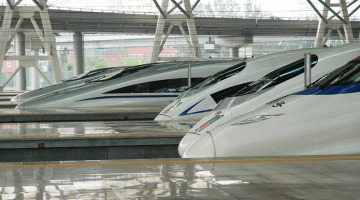China is now faced with a major challenge. Yes, they developed the largest high-speed railway in the world, but how would China Railways Corporation (CRC) fund its continuous development?
The recent report of World Bank gave some insights to this question. Attracting Capital for Railway Development in China included case studies on how railways in seven countries and firms in China have drawn capital. It also indicated how they decided on budgeting in order to support their strategic development.
According to Martha Lawrence, Senior Railway Specialist at World Bank and co-author of the report, they are responding to the interest of CRC to search for new capital sources. They are also recommending alternative financing options as a method of leveraging the assets’ values.
The research suggests several ways that CRC can leverage financing from the railway’s large fixed asset base.
The report studied five classifications of applicable cases on how to vary funding sources and how to attract investments. The 15 cases are derived from Russia, France, Japan, the United States, Poland, United Kingdom, India and China. It covers areas including financial leasing, portfolio management, public-private partnership and equity flotation.
The research suggests several ways that CRC can leverage financing from the railway’s large fixed asset base. One way is to expand its financial sources by organizing and managing its subsidiary entities to maximize their value, as well as the generation of cash flow. Another way is to raise new equity through Initial Public Offering (IPO) of profitable and well-governed subsidiary entities.
The study concluded that railways all around the world are able to use a broad range of mechanisms to draw investment capital. The investor’s usual requirement is that the investment is advantageous and proportionate to the risks. CRC should take into account the risks, benefits and costs of every mechanism and utilize those that suit them best.
This post was originally published on this site






